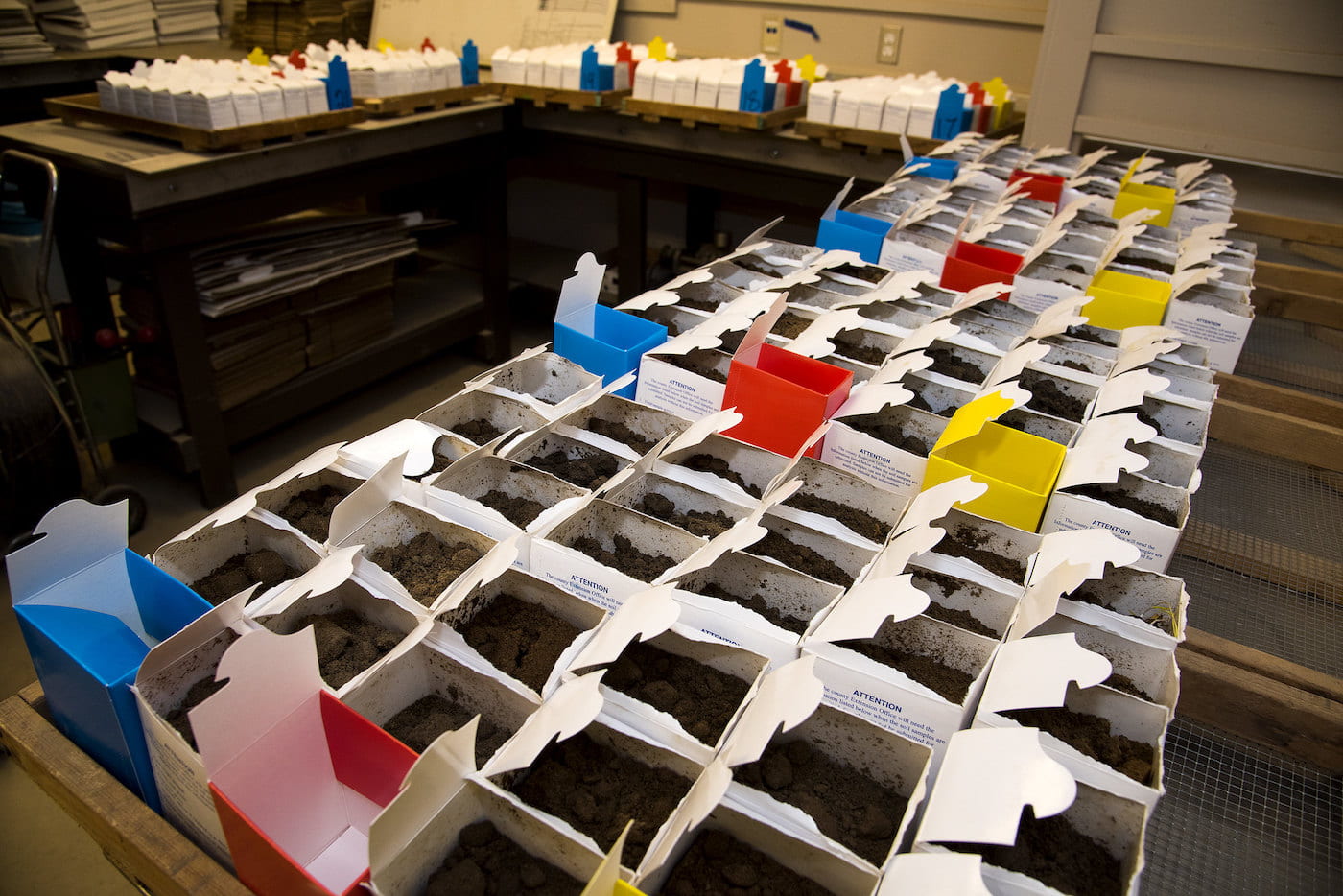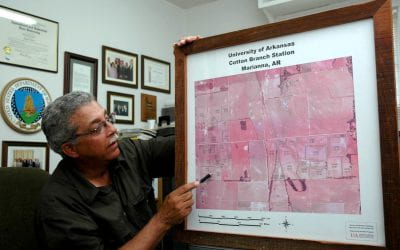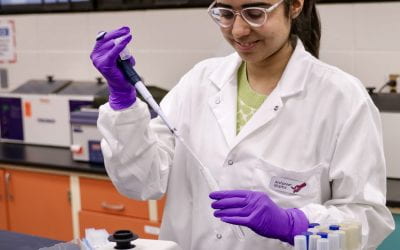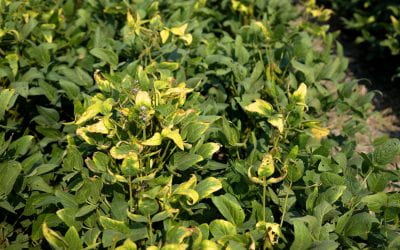Fertilizer Recommendation Support Tool Development Gets Boost in USDA Funding
Fertilizer Recommendation Support Tool to provide consistency across state lines
By John Lovett – May 16, 2023

FAYETTEVILLE, Ark. — Efficient and profitable farming depends on accurate soil testing, but fertilizer recommendations for the same batch of soil differ across the nation. A coordinated effort from researchers across the United States seeks to solve that problem.
The U.S. Department of Agriculture’s Natural Resources Conservation Service is giving more than $1.6 million in grant support to the ongoing development of the Fertilizer Recommendation Support Tool, or “FRST,” as an interface website. It is part of a $40 million investment in 31 new projects through USDA’s Conservation Innovation Grants, or CIG, program.
“The tool will help save money and resources for producers and identify data gaps for crop consultants and scientists,” said Nathan Slaton, associate vice president for agriculture and assistant director of the Arkansas Agricultural Experiment Station for the University of Arkansas System Division of Agriculture.
Slaton, principal investigator on the national project, said the online tool will provide greater consistency in phosphorus and potassium fertilizer recommendations across state lines. Those two minerals are the primary nutrients from routine soil testing that are used to predict the need for crop fertilization, Slaton explained.
The idea for the decision support tool came from discussion among the Southern Extension and Research Activities Information Exchange Group, known as the “SERA 6.” They conducted a survey in 2018 to investigate why fertilizer recommendations change across state lines even when using the same soil test.

SOIL SCIENCE — Nathan Slaton with the Arkansas Agricultural Experiment Station will serve as principal investigator of the Fertilizer Recommendation Support Tool project. (U of A System Division of Agriculture photo)
“The way it is now, someone can collect a soil sample, put it in two containers, and ship one to the Division of Agriculture’s soil testing laboratory in Marianna and the other to Waypoint Labs in Memphis, and when they get the reports back, even if the soil test numbers are similar, the fertilizer recommendations are different,” Slaton said. “The end user is going ‘Why?’ When that happens, it erodes the end user’s confidence in our science.”
This is an issue because farmers and crop consultants sometimes send their soil samples to labs outside of their home state. Some producers have farms that cross a state line, or they may farm in two different states. Soil testing has the common goal of determining which nutrients and how much fertilizer to apply. But soil-testing laboratories in the United States use different analytical methods, interpretations and philosophical approaches to fertilizer recommendations, Slaton explained.
The FRST website will allow a farmer or crop consultant to select their soil type, crop type, geographic region and soil test extractant to provide tailored soil test recommendations. A model for the FRST website is Australia’s Better Fertilization Decision for Cropping, Slaton said.
USDA noted in its Conservation Innovation Grants award that improving soil-test-based recommendations and their interpretation “has the potential to significantly reduce nutrient applications by accurately identifying the critical soil test value.” The soil test value identifies the point at which soil will no longer respond to fertilizer.
Deanna Osmond, professor and extension specialist for soil fertility and watershed management at North Carolina State University, said most science-based soil fertility recommendation systems in the United States often derive phosphorus and potassium fertilizer guidance from decades-old soil-test relationships.
“There are states that have not looked at their soil test recommendations for 50 or 60 years, and I think this will give them a more structured environment in which to make their decisions,” said Deanna Osmond, who is also co-principal investigator of the national project.
Osmond was instrumental in securing the USDA-NRCS funding and creating cohesiveness for the project, Slaton said.
There have been many changes to varieties, tillage and cropping systems, which need to be captured relative to nutrient needs, Osmond said. In addition to agronomic benefits to make farming more profitable, the tool should also help provide environmental benefits by keeping excess phosphorus out of waterways, she said.
To learn more about Division of Agriculture research, visit the Arkansas Agricultural Experiment Station website: https://aaes.uada.edu. Follow us on 𝕏 at @ArkAgResearch and Instagram at @ArkAgResearch.
To learn about Extension Programs in Arkansas, contact your local Cooperative Extension Service agent or visit https://uaex.uada.edu/. Follow us on 𝕏 at @AR_Extension.
To learn more about the Division of Agriculture, visit https://uada.edu/. Follow us on 𝕏 at @AgInArk.
About the Division of Agriculture
The University of Arkansas System Division of Agriculture’s mission is to strengthen agriculture, communities, and families by connecting trusted research to the adoption of best practices. Through the Agricultural Experiment Station and the Cooperative Extension Service, the Division of Agriculture conducts research and extension work within the nation’s historic land grant education system.
The Division of Agriculture is one of 20 entities within the University of Arkansas System. It has offices in all 75 counties in Arkansas and faculty on five system campuses.
The University of Arkansas System Division of Agriculture offers all its Extension and Research programs and services without regard to race, color, sex, gender identity, sexual orientation, national origin, religion, age, disability, marital or veteran status, genetic information, or any other legally protected status, and is an Affirmative Action/Equal Opportunity Employer.

SOIL SCIENCE — Nathan Slaton with the Arkansas Agricultural Experiment Station will serve as principal investigator of the Fertilizer Recommendation Support Tool project. (U of A System Division of Agriculture photo)
More Recent News
Claude Kennedy, Retired Cotton Station Director, Former ASCS Regional Director, Passes Away at 82
Kennedy, with his radiant smile and outstretched hands, would welcome visitors and instantly make them feel at home. More often than not, a first-time visitor would get a tour and offer of lunch, regardless of what else was on Kennedy’s calendar that day. By Mary...
New Parasite Affecting Canadian Partridges Named for Arkansas Poultry Scientist
Canadian researchers name new Eimeria parasite species after Arkansas scientist By John Lovett – Apr. 16, 2024 NAMESAKE — Billy Hargis, Distinguished Professor of poultry science for the Arkansas Agricultural Experiment...
Food Scientists are Finding Ways to Preserve Food Quality and Ensure Food Safety
Food scientists develop framework to improve food quality and still kill pathogens By John Lovett – Apr. 12, 2024 QUALITY CONTROL — Arshpreet Khattra was the lead author of a study that developed a framework for food...
Claude Kennedy, Retired Cotton Station Director, Former ASCS Regional Director, Passes Away at 82
Kennedy, with his radiant smile and outstretched hands, would welcome visitors and instantly make them feel at home. More often than not, a first-time visitor would get a tour and offer of lunch, regardless of what else was on Kennedy’s calendar that day. By Mary...
New Parasite Affecting Canadian Partridges Named for Arkansas Poultry Scientist
Canadian researchers name new Eimeria parasite species after Arkansas scientist By John Lovett – Apr. 16, 2024 NAMESAKE — Billy Hargis, Distinguished Professor of poultry science for the Arkansas Agricultural Experiment...
Food Scientists are Finding Ways to Preserve Food Quality and Ensure Food Safety
Food scientists develop framework to improve food quality and still kill pathogens By John Lovett – Apr. 12, 2024 QUALITY CONTROL — Arshpreet Khattra was the lead author of a study that developed a framework for food...
USDA-Grant Supported FRST Project Releases New Fertilizer Prediction Tool
Fertilizer recommendation tool for farmers could save money and reduce nutrient loss By John Lovett – Apr. 8, 2024 DECISION AID — Farmers have a new fertilizer decision aid available called FRST (Fertilizer...




